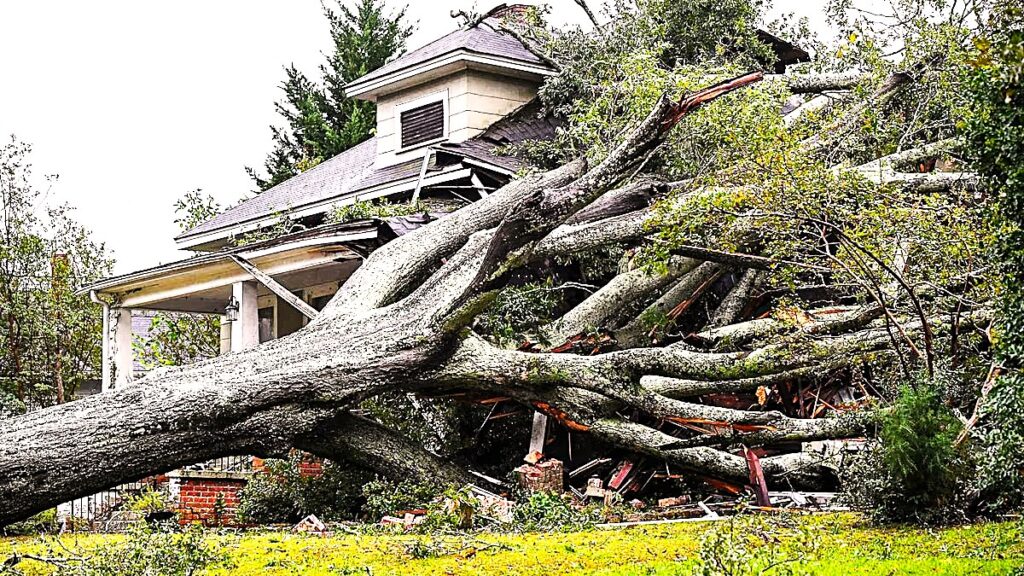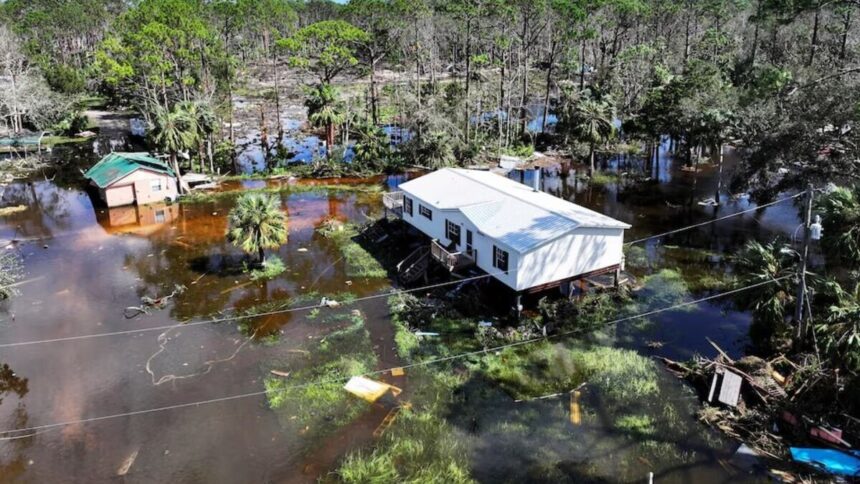Hurricane Helene has unleashed unprecedented destruction across the Southeastern United States, leaving a trail of devastation from Florida to the Carolinas. With record rainfall totals exceeding 29 inches in some areas, communities are grappling with catastrophic flooding and widespread power outages.
WATCH: Helene brought life-threatening flooding to wide sections of the US Southeast, where at least 43 people have been killed by a storm that swamped neighborhoods, triggered mudslides and left more than 3.5 million homes and businesses without power https://t.co/OsHdN6mT0t pic.twitter.com/HSlgEDcn1d
— Reuters Asia (@ReutersAsia) September 28, 2024A Storm of Historic Proportions
Hurricane Helene made landfall as a Category 4 hurricane in Florida’s Big Bend region on Thursday night, packing maximum sustained winds of 140 mph. It was the first hurricane of its strength to strike the area since records began in 1851. The storm quickly weakened into a post-tropical cyclone, but its remnants continued to produce torrential rain, leading to severe flooding in parts of North Carolina and Tennessee.
As of Saturday morning, at least 49 fatalities have been reported across multiple states, including Florida, Georgia, South Carolina, North Carolina, and Virginia. Emergency responders are conducting door-to-door searches, raising concerns that the death toll may rise as recovery efforts progress.
Flooding Crisis in Tennessee
In Tennessee, authorities issued flash flood emergencies due to concerns about potential dam failures. The Nolichucky Dam faced an imminent breach, prompting urgent evacuation notices for over 100,000 residents. Fortunately, by Saturday morning, the dam remained intact, and water levels were receding. However, many communities are still at risk, and emergency services continue to monitor the situation closely.
Record-Breaking Rainfall
Rainfall totals in North Carolina were staggering, with locations like Busick recording nearly 30 inches in just 48 hours. The National Weather Service warned that the storm has produced one of the most significant weather events in the region’s history, leading to landslides and river levels that exceeded historical benchmarks.
In Asheville, local officials imposed a curfew as flooding led to numerous road closures. With over 400 roads shut down, emergency services are overwhelmed. The situation remains dire, with residents advised to stay away from floodwaters due to risks such as downed power lines and sewage contamination.
Ongoing Rescue Efforts
As communities struggle to recover, nearly 4,000 National Guardsmen have been deployed across Florida, North Carolina, Georgia, and Alabama to assist with rescue operations. FEMA has also mobilized over 1,500 federal personnel to support impacted areas.
In Tennessee, over 50 individuals stranded on the roof of Unicoi County Hospital were successfully rescued after floodwaters rose rapidly. Such rescues underscore the urgency of the situation as emergency crews work tirelessly to reach those in need.
Power Outages and Infrastructure Damage
Hurricane Helene’s impact on infrastructure has been profound. More than 3 million customers across Florida, Georgia, South Carolina, and North Carolina are without power. Utility companies are struggling to restore services amidst extensive damage to power lines and equipment.
In Florida, communities such as Cedar Key and Keaton Beach have experienced catastrophic damage. Mayor Sue Colson of Cedar Key reported that the town is currently uninhabitable due to a lack of power and sewage services. Similarly, Keaton Beach saw homes destroyed, leaving residents wondering where they will go next.

The Human Toll of Helene
The human impact of Hurricane Helene is heart-wrenching. Families like Jennifer Replogle’s, a pregnant mother of two in North Carolina, are facing dire circumstances. Trapped at home with no food and running out of water, she expressed her desperation for help.
In Florida, residents like Eric Church and Erin Peelar have lost their homes entirely, left with nothing but rubble. Their story reflects the broader struggles faced by countless families across the affected regions.
Continuing Threats
The threat from Hurricane Helene is not over. While it has weakened, its remnants are still expected to bring additional rainfall and gusty winds to the eastern U.S. Up to 2 inches of rain are predicted in areas still recovering from previous deluges, raising concerns about further flooding.
Officials warn that residents should remain vigilant as flash flood emergencies remain in effect across several states. The National Weather Service has urged caution regarding hazardous conditions in floodwaters.
A Long Road to Recovery
As the Southeast begins to assess the full extent of the damage caused by Hurricane Helene, the road to recovery will be long and arduous. Federal, state, and local agencies are working around the clock to provide assistance, but the challenges are immense. With many communities in ruins and thousands displaced, the focus will now shift to recovery efforts and rebuilding lives.
Hurricane Helene’s catastrophic impact serves as a stark reminder of the increasing severity of hurricanes and extreme weather events, possibly linked to climate change. As recovery efforts continue, the affected communities will need support from every corner to rebuild and recover from this unprecedented disaster.
Read More : The Cost of What Eric Adams Compromised: Implications of His Federal Indictment






